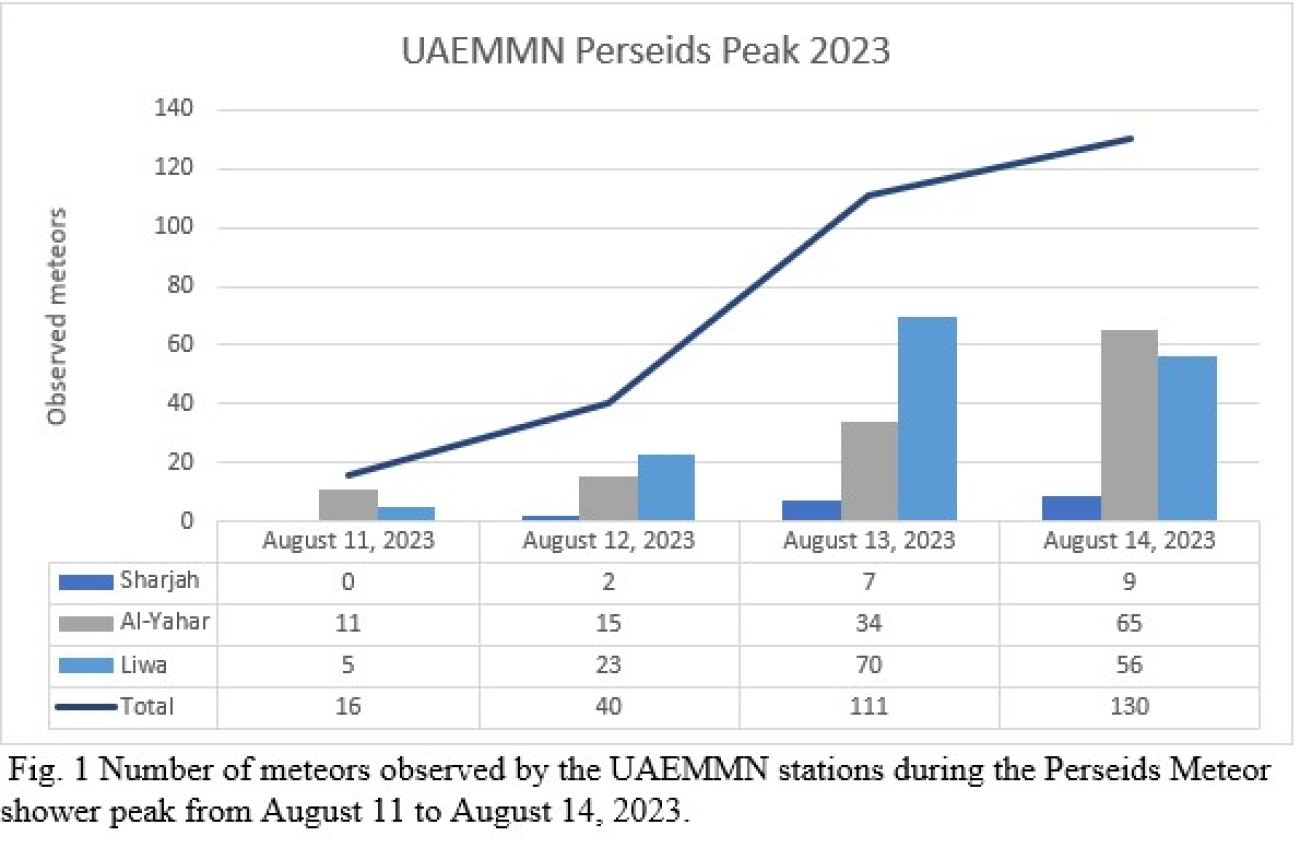The radiant point, or apparent point of origin for the meteors, is near Perseus’s constellation. A unique aspect of this year’s Perseid observation is the promising weather conditions in some parts of the UAE and the absence of moonlight disturbance during the peak nights due to the moon’s waning crescent phase with only 8% illumination, which enhances the visibility of meteors in a clear, dark sky.
The UAE Meteor Monitoring Network (UAEMMN) operates three observation stations located in Sharjah, Al-Yahar, and Liwa. These stations observed the Perseids shower; their details results are presented in Figure 1. The peak observation night was August 14, during which the three stations collectively recorded 130 meteors. On August 13, Liwa had the highest individual station count, while the cumulative detections from all three stations totaled 111 meteors. The total was 40 meteors on August 12. The lowest detection was on August 11, with 16 meteors detected across the stations. Over the period from August 11 to August 14, the network stations reported a total of 297 meteors, including paired detections.



